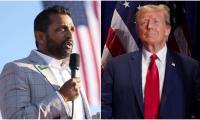As the rupee recovers some of its lost ground after China gave a loan of $2.3 billion to Pakistan, key realities surrounding the economy point towards an all-encompassing harsh conclusion – the toxicity of the nation’s economic framework.
For years, Pakistan has lived well beyond its means and in the process has witnessed an ever growing gap between its highest income households versus lowest income ones. Even with the resumption of a $6b IMF loan programme in the near future, the quality of life for Pakistan’s mainstream population is set to remain adverse for the time being. Growing hunger, the risk of another currency collapse, high inflation and periodic shortages of key commodities potentially surround Pakistan for the foreseeable future.
Meanwhile, in an election year leading up to next years’ parliamentary polls, the ability of the federal government in Islamabad to truly step on heels of individuals and groups tied to powerful vested interests, remains in doubt.
Friday’s announcement of a 10 percent ‘super tax’ on some of Pakistan’s industrial giants only promises to fuel inflationary trends across the country. With protection of consumers across Pakistan virtually non-existing, the burden from this gigantic tax is set to be passed on to ordinary consumers. This outlook is set to aggravate further as Pakistan’s mainstream households brace themselves for the fallout from one of the highest spikes in domestic energy prices. During the next year, the tariffs for electricity and gas are set to rise 50 percent and 45 percent respectively in addition to the recent petrol price increase by a third. Together, these heavy burdens have already discarded the official target rate of inflation clocking in at 11.5 per cent during the next financial year.
Meanwhile, growing economic challenges surrounding Pakistan are firmly embedded in the way the country is governed. The ability of any government to firmly enforce price controls remains weak, especially in the absence of efficient administrative mechanisms performing robustly across the country. This is the net result of the decay surrounding the administrative order put in place, under former president Pervez Musharraf’s widely publicised devolution network. That order was meant to deliver a more efficient government which eventually could become much more accountable to the mainstream population. Instead, the administrative order has clearly gone in reverse. Neither the perceived new arrangement has come up to speed across the districts and tehsils, nor has the previous order survived enough to pick up the pieces of its own destruction and move on.
On the economic front, two inter-related challenges have come to increasingly haunt Pakistan over time. First, the national leadership that is now overseeing largely inflationary policies can simply not inspire popular confidence in their ability to rid Pakistan of the challenges it faces today. With cases of blatant corruption surrounding some of Pakistan’s most prominent ruling politicians, it is hard to imagine the country’s rank and file preparing to fall in behind their leaders in the hope of a better future. With a clear disconnect between the rulers and the ruled, Pakistan’s journey into an unknown future has become increasingly prone to a harsh backlash. For the moment, ruling politicians have taken comfort from few signs of a popular disquiet turning in to a larger public movement. But that comfort is just not enough to fuel complacency among the ruling class.
A cursory view across global history of the last century amply highlights unpredictable trends emerging from controversial pursuits. And Pakistan now faces the danger of a ‘surprise’ backlash as the squeeze intensifies across neighbourhood after neighbourhood.
Second, exactly what combination of a leadership is capable of meeting both complex and ever growing challenges surrounding Pakistan’s economy? In today’s charged environment, it’s hard to imagine a complete national consensus on the best way forward. Notwithstanding their harsh rivalry, Pakistan’s political parties are led by controversial leaders who are often surrounded by equally controversial supporters.
For each effort to break new ground in the service of economic reforms, there’s likely to be resistance from a vested interest with deep ties to one business sector or another. Often, the idea of a government led by apolitical individuals has been promoted by some as the best way forward to take Pakistan trajectory towards a more promising future. But in the midst of a harsh political divide, it’s hard to imagine opposing political players agreeing on anything
including how best to reform Pakistan’s troubled economy.
Malaysian Meteorological Department warns that heavy rains will continue until Sunday in Kelantan, Terengganu and Perak
FBR says it might face shortfall of Rs321 billion for first half period
Tarar repeats claim on November 30 asking for any proof of dead bodies
Government decides to grant extension in registration; now new deadline has has been revealed by PTA yet
"It was excellent conversation," Trudeau told reporters as he was leaving hotel in West Palm Beach
Judge Manzar Ali Gul emphasises that as a leader,Imrans statements significantly influence party members







